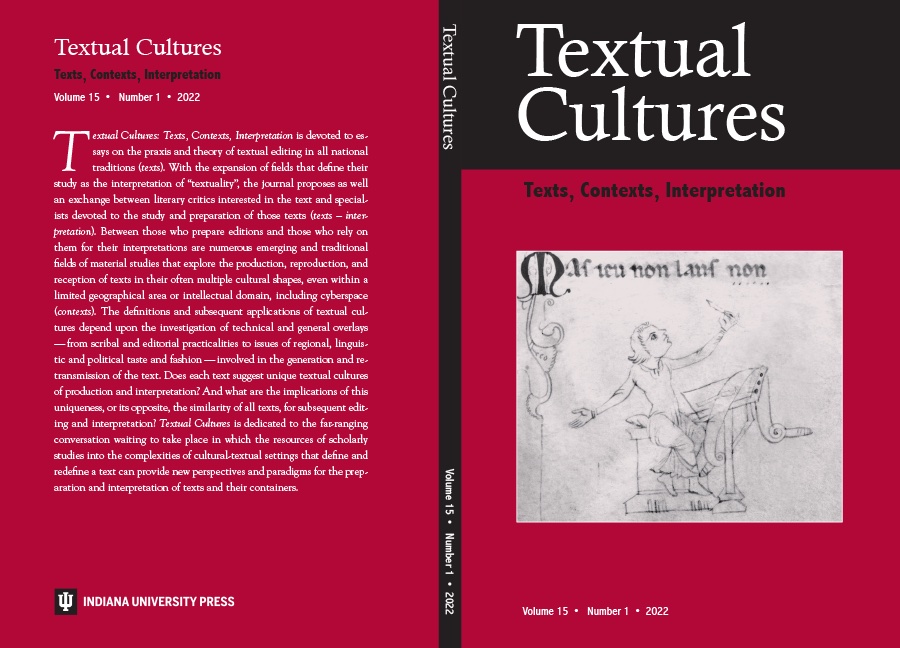(say) between 22 and 24 seconds Edition as Totality
Main Article Content
Abstract
This essay considers William Empson’s Seven Types of Ambiguity (1930/1947) as a text situated within overlapping cultures of editing. Most famously, the book responds to Robert Graves and Laura Riding’s readings of Shakespeare’s “unedited” Sonnet 129, but it also closely reads scholarly footnotes. Empson’s own revisions for the 2nd edition and his prefatory reflections on them then extend an awareness of and willingness to play with mise-en-page unusual in literary criticism of the period, though common in its poetry. Seven Types should also be seen in the context of the Experiment group of writers, artists, and film-makers, for whom editing included montage and the curation of found texts and images. As a highly self-conscious textual environment predicated on editorial intervention read and written as a creative resource and scene of performance, it challenges the prospective editor by focusing attention on the spaces and times of editing.
Further questions about textual performance are posed by this article’s form. All academic articles, like editions, are montages: they assemble, in significant sequence, textual elements drawn from different sources. Current conventions of scholarly referencing tend to conceal this, however, in that they persistently shift authority and attention away from the montage as process, the local effects of the selections and juxtapositions it performs, and the reader’s experience of these in the here and now of reading. Whereas the edition’s authority draws a text’s history into the present tense of its utterance, the article’s scholarly apparatus directs us to the past (in the form of those pre-existing and uncut works from which cited material originates) and scripts a future (in which readers will trace and restore this material to its original location). In order to reflect on the edition, this essay removes most of the article’s usual apparatus of reference in order to allow the montage itself and its present tense to predominate; where short quotations are incorporated in the text italics are substituted for quotation marks to indicate the temporary alteration of tone from one voice to another. These departures do not argue for the wholesale elimination of scholarly apparatus; rather, the essay’s wider suggestion would be that creative-critical writing is in a position to question all aspects of the academic text, reclaiming its form and formats for authorial use so that the conventional can re-emerge as an expressive resource.
Downloads
Article Details
Authors who publish with this journal agree to the following terms:
- Authors retain copyright and grant the journal right of first publication with the work simultaneously licensed under a Creative Commons Attribution License (see:http://creativecommons.org/licenses/by/3.0/us/) that allows others to share the work with an acknowledgment of the work's authorship and initial publication in this journal.
- Authors warrant that their submission is their own original work, and that they have the right to grant the rights contained in this license. Authors also warrant that their submission does not, to the best of your knowledge, infringe upon anyone's copyright. If the submission contains material for which an author does not hold the copyright, authors warrant that they have obtained the unrestricted permission of the copyright owner to grant Indiana University the rights required by this license, and that such third-party owned material is clearly identified and acknowledged within the text or content of their submission.
- Authors are able to enter into separate, additional contractual arrangements for the non-exclusive distribution of the journal's published version of the work (e.g., post it to an institutional repository or publish it in a book), with an acknowledgment of its initial publication in this journal.
